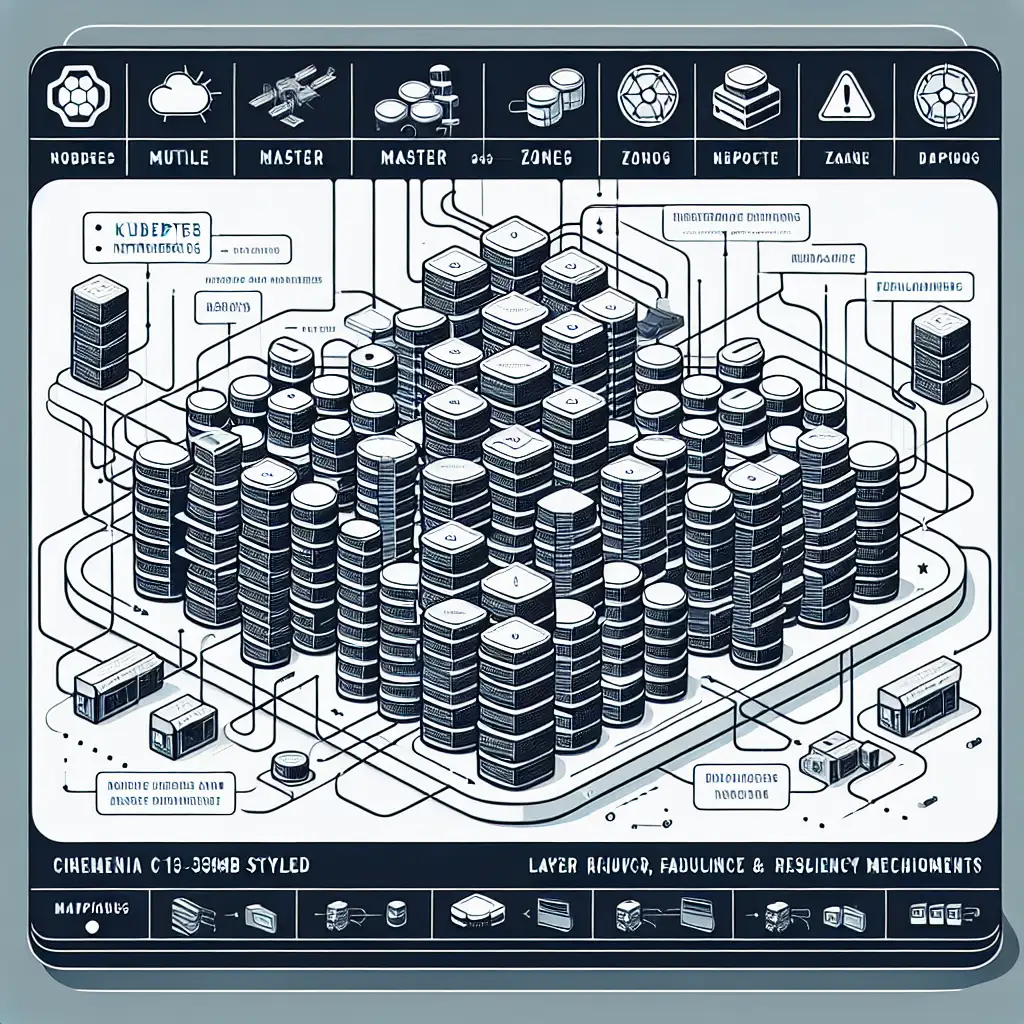How to Architect a Highly Resilient Kubernetes Cluster that Minimizes Downtime
Most teams treat Kubernetes like a black box and only think about resilience after a failure hits. What if you started by architecting your cluster to handle failure gracefully from day one? In today’s cloud-native landscape, designing your Kubernetes cluster for resilience isn’t just a nice-to-have — it’s essential. Businesses depend on uninterrupted service, and outages cost both revenue and reputation.
In this post, I’ll walk you through practical steps to build a highly resilient Kubernetes cluster from the ground up. Whether you’re starting fresh or re-architecting an existing environment, these strategies will help ensure your applications keep running smoothly, even when disaster strikes.
1. Choose a Multi-AZ (Availability Zone) Deployment Strategy
Why? Running your cluster nodes across multiple availability zones mitigates the risk of zone-level failures.
How?
- When provisioning your cluster (on AWS EKS, Google GKE, Azure AKS, or on-prem), ensure worker nodes are spread across at least two or three AZs.
- Kubernetes’ control plane (especially managed services like EKS/GKE) usually spans multiple AZs by default.
Example:
On AWS EKS, specify multiple subnets in different AZs during cluster creation:
eksctl create cluster --name resilient-cluster \
--zones us-east-1a,us-east-1b,us-east-1c \
--nodegroup-name standard-workers \
--node-type t3.medium --nodes 3
This spreads your worker nodes across three AZs.
2. Architect Your Control Plane for High Availability
The control plane is the brain of your cluster — if it goes down, so does your ability to schedule pods or react to issues.
Tips:
- Use managed Kubernetes services that provide HA control planes (EKS/GKE/AKS typically do this out of the box).
- If self-managing, run multiple etcd instances in a highly available quorum (odd number ≥ 3).
- Set up dedicated masters/nodes with anti-affinity so these critical components don’t run on the same physical host.
3. Design Worker Nodes with Failure in Mind
Your application pods run here. Node failures are inevitable; designing for them matters.
Use Node Auto-Replacement & Scaling
Configure auto-scaling groups with health checks so unhealthy nodes get terminated and replaced automatically.
Spread Pods Across Nodes & Zones
Kubernetes PodAntiAffinity rules ensure pods of the same type don’t land on the same node or AZ:
affinity:
podAntiAffinity:
requiredDuringSchedulingIgnoredDuringExecution:
- labelSelector:
matchExpressions:
- key: app
operator: In
values:
- my-app
topologyKey: "kubernetes.io/hostname"
This prevents all replicas from being killed if one node fails.
Regularly Update & Patch Nodes
Automate rolling updates with zero downtime by cordoning and draining nodes before replacing or upgrading them.
4. Make Your Applications Highly Available Inside Kubernetes
Use Multiple Replicas for Critical Pods
Configure Deployment manifests with at least three replicas:
spec:
replicas: 3
This ensures if one pod dies, others keep serving.
Implement Readiness & Liveness Probes
Proper probes help Kubernetes detect unhealthy pods and restart them without human intervention.
Example:
readinessProbe:
httpGet:
path: /healthz
port: 8080
initialDelaySeconds: 10
periodSeconds: 10
livenessProbe:
httpGet:
path: /livez
port: 8080
initialDelaySeconds: 30
periodSeconds: 10
5. Utilize Stateful Workloads Correctly with Persistent Storage
For applications needing persistent data (databases, caches), resiliency means:
- Using storage classes provisioned across multiple AZs.
- Leveraging cloud-managed volumes (EBS GP3 volumes with multi-AZ snapshots).
Example on AWS EKS - define a StorageClass:
kind: StorageClass
apiVersion: storage.k8s.io/v1
metadata:
name: ebs-sc
provisioner: ebs.csi.aws.com
parameters:
type: gp3
reclaimPolicy: Delete
volumeBindingMode: WaitForFirstConsumer
6. Backup Critical Cluster Data and Resources
Backup is your last line of defense.
- etcd backups: If self-hosted control plane — automate etcd snapshots.
- Cluster state: Tools like Velero let you back up namespaces, persistent volumes, configmaps.
Example Velero command to schedule backups:
velero schedule create daily-backup --schedule="0 2 * * *"
7. Monitor & Auto-Recover from Failures
Proactive monitoring helps you spot trouble early:
- Set up Prometheus + Grafana for cluster metrics.
- Use AlertManager to notify teams immediately.
Combine with automated remediation tools:
- Use Kured to reboot nodes safely after kernel patches.
- Implement Pod Disruption Budgets (PDBs) to avoid taking down too many pods during maintenance.
Sample PDB ensuring at least two pods stay healthy:
apiVersion: policy/v1beta1
kind: PodDisruptionBudget
metadata:
name: my-app-pdb
spec:
minAvailable: 2
selector:
matchLabels:
app: my-app
Wrapping Up
Architecting a highly resilient Kubernetes cluster starts now—not after your first outage. By combining multi-AZ deployments, HA control planes, well-configured worker nodes, intelligent pod scheduling strategies, persistent storage design, backups, and continuous monitoring — you can minimize downtime and keep your applications reliably serving users regardless of underlying infrastructure hiccups.
If you want to get hands-on next steps, start by reviewing your current cluster’s node distribution and pod anti-affinity rules today. Small changes here can prevent major headaches tomorrow!
Have you built resilient clusters before? What’s worked best in your experience? Share in the comments!
